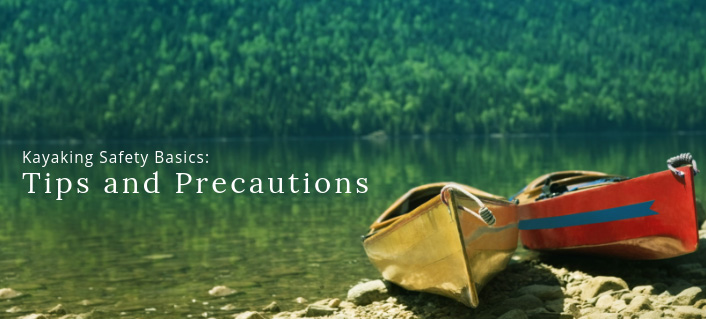Kayaking Safety Basics: Tips and Precautions

Kayaking is a great way to get in a workout while you enjoy everything nature has to offer. Like all outdoor activities, however, it comes with its own set of risks you need to account for before you leave the shore. As you set out on your adventure, remember these kayaking safety basics to ensure it goes off without a hitch.
Prepare for Local Weather Dangers
Monitoring the weather conditions in the location you’ll kayak is crucial to keep yourself safe out on the water. You should determine the air and water temperatures during the excursion, any potential storms in the forecast, and any additional hazards brought about by the climate. Staying informed in this manner is especially important if you kayak in an unfamiliar environment. This will also give you an idea of what clothing to pack and what additional precautions you’ll need to take before you set off.
Use the Essential Safety Gear
While you might not expect anything to go wrong, you need to stay prepared in case something does. First and foremost, always wear your personal floatation device when near the water. It should fit snuggly, but not so tight that your movement is restricted. You should also bring additional safety equipment with you on the kayak, such as a whistle to call for help, a spare paddle, a headlamp, and a towline. These tools can come in handy when you least expect it, and they can potentially safe your life in a dangerous situation.
Think About Your Skill Level
If you’re a first-time kayaker, it’s often best to start with a guided excursion rather than going on your own. While you don’t have to be an expert to head out with a group of friends, it’s important you’re experienced enough to protect yourself in a bind. You should also be able to identify when the conditions are too hazardous for you to handle.
Bring a Friend and a Plan
Even if you’re an experienced kayaker, it’s very beneficial to bring a friend along to help you if a problem arises. Though it’s possible to rescue yourself in certain situations, buddy rescue practices are often more effective and safer to execute. In addition to kayaking with friends, it’s also recommended you create a float plan if you don’t return on time from your trip. Leaving the details about your group members, route, and timeline with a trusted individual will give them an idea of where you’ll go and when to start worrying if something goes wrong.
At Wild Louisiana Tours, we aim to provide you with the best swamp kayaking experience in New Orleans—we take the proper precautions to keep you and your loved ones safe. Our tour guides will keep an eye out for inclement weather conditions and ensure each of the group’s members returns safely to shore.
